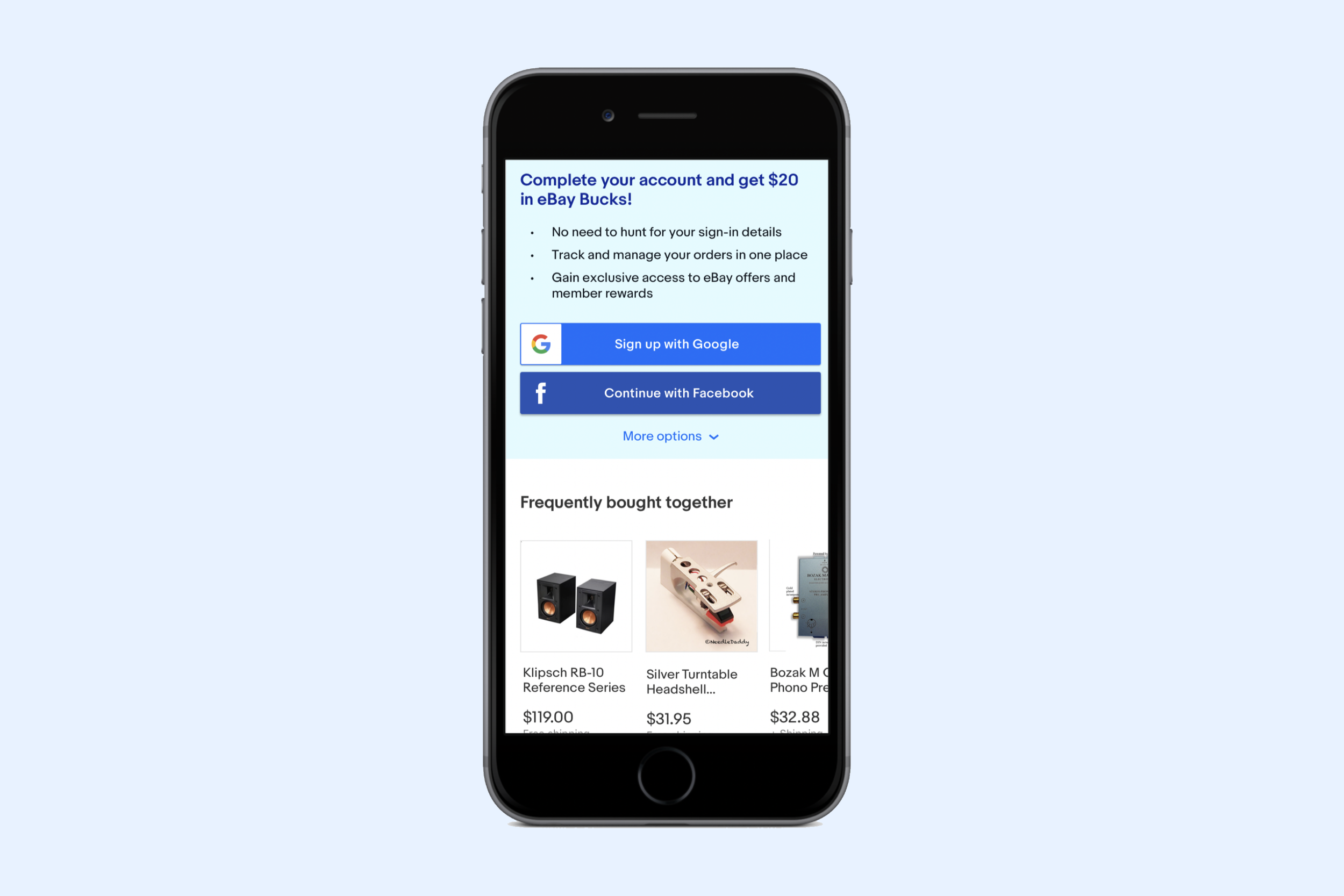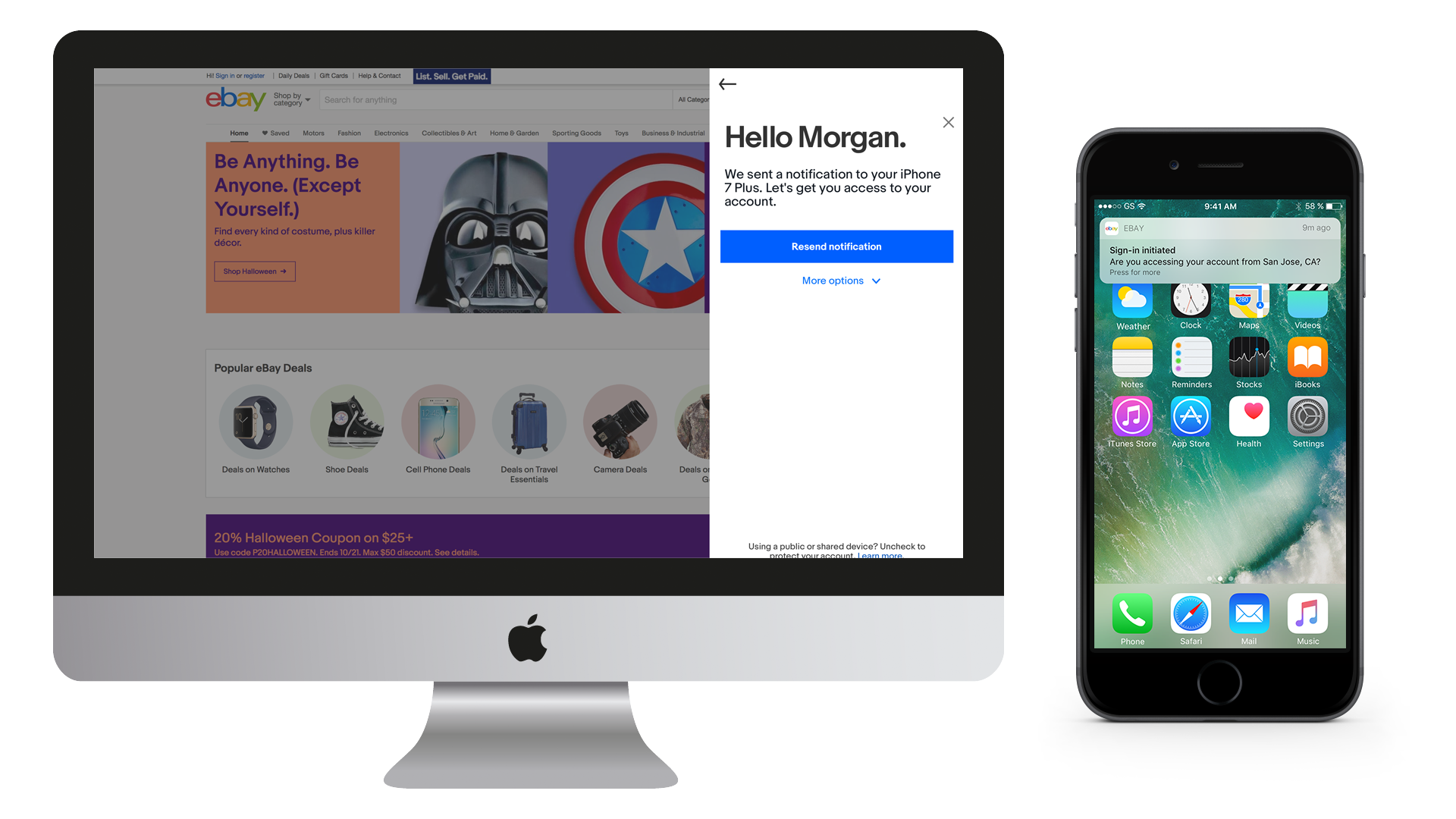eBay’s Seamless Registration Experience
As a Lead Designer at eBay, I was responsible for Identity initiatives, including authentication, seamless registration, and cross-platform sign-in experiences. I partnered with product and engineering to shape our identity roadmap, while mentoring two designers and collaborating closely with content and research. I also guided design exploration and storytelling to influence executive alignment on future authentication strategies.
Problem
A consumer’s very first interaction with eBay could mean the difference between a one-time visitor and a lifelong buyer. But too often, that first step — registration — was filled with unnecessary friction. As part of the Identity team, I was tasked with reimagining this critical moment so that it felt effortless, trustworthy, and modern.
When I looked across the experience, several issues became clear. New buyers were tripping over a complex onboarding flow that asked too much too soon. Those who moved between mobile, web, and app encountered inconsistencies that eroded trust. And as identity expectations were evolving across the industry, eBay lacked modern authentication options like social sign-in and passwordless login, features that customers increasingly expected.
Our challenge was bigger than just polishing a sign-up form. We needed to simplify registration, unify the experience across platforms, and introduce new authentication patterns that would make sign-in not just seamless, but also forward-looking. The goal was to set a foundation for identity at eBay that reduced friction for buyers while building trust in every interaction.
Story First Exploration
I led the team in grounding our work with realistic buyer journeys, mapping out how a first-time customer might arrive at eBay and attempt to register. Rather than over-investing in early mockups, we used user flow diagrams to communicate the story and quickly align stakeholders on the problem. From this, we identified mobile web as the most critical entry point. We refined visuals and interactions to demonstrate how registration could be seamless in that environment.
Expanding Identity Features
As we refined the registration journey, I pushed the team to explore ways we could extend the value of Identity across platforms. We introduced concepts like email reusability to simplify sign-in. We investigated a passwordless login experience that used push notifications to encourage app downloads while maintaining continuity on desktop. These explorations helped shape a vision for a more flexible and modern authentication system.
Iterative Refinements
Through evaluation, we identified unnecessary steps in the initial concept and removed them to streamline the experience. To communicate our direction, I developed a five-minute executive-ready prototype that distilled the story into a clear, concise vision. This not only secured leadership alignment but also demonstrated how the approach could scale across multiple platforms.
From Concept to MVP
Our exploration revealed that social registration was a critical gap in the eBay experience. I worked with product and engineering partners to elevate this capability in the 2018 roadmap, prioritizing Facebook Sign-In as the first release. We extended support to include Google Sign-In on iOS and Android, with plans to expand to desktop and mobile web, creating a foundation for modern, user-friendly Identity at scale.
Impact
We hypothesized that introducing modern authentication methods, such as social sign-in, would significantly reduce friction in registration, strengthen trust, and increase account creation by meeting evolving customer expectations. The launch of social sign-in validated that hypothesis and marked a turning point for eBay’s identity experience. Within the very first week, 62,000 existing users linked their accounts to Facebook, and 24,000 new accounts were created in Australia and the UK. These results were impossible to ignore — they confirmed not only the demand for simpler, modern authentication but also the strategic importance of social registration. That validation quickly shaped our roadmap, paving the way for a U.S. rollout and broader integration of Google sign-in across platforms.
For me, this work was also an exercise in leadership and influence. Communicating complex identity solutions to executives required clarity and focus, and I learned how to distill technical and user challenges into a narrative-driven prototype that told the story in under five minutes. That skill became critical in securing alignment and momentum for the initiative.
The key learning was that by framing Identity not just as a security function but as a customer experience driver, we could unlock both trust and growth. Most importantly, the project positioned the Identity team to move beyond one-off fixes and toward a user-centric evolution of authentication, one that balances security and trust with the kind of seamless registration that turns first-time visitors into active buyers.


